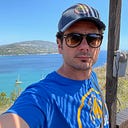APPsolute guide to app design
Part 2: Shortcuts to App success
Tailor made apps
With the experience of working with clients of different sizes, our design process is tailor made for every project depending on its needs and budget and aimed at catapulting businesses to success.
Working with our interdisciplinary strategic team (business developers, software architects, and product designers) to identify the goals and problems and then define the product, our design team approach every single project flexibly and create smart yet practical solutions accordingly.
During the first phase, our goal is to discover needs from the perspectives of users, business and market respectively.
To avoid engaging in unnecessarily costly and lengthy research, we have adopted an agile approach to collect insights in such fields that can help us make the best decisions moving forward.
After garnering insights, we start our iterative design process where we do rapid prototyping and testing in a cycle to test our assumptions and refine the product. This stage is vital because this is where we can make sure we have absolutely nailed every detail and are therefore building the right product. It avoids rushing into production with the wrong product and reduces risks and costs massively.
Appy Start ups
In recent years, we have particularly gained a lot of experience in working with startups and brand new products, and the insight we have attained is tremendous.
What we learn is that startups have great and ambitious ideas, but what is usually lacking is the capability to understand their product from a wide range of angles as well as an external voice that brings in some much needed realism.
In reality, the success rate of startups and apps is notoriously low. Those that failed usually tend to spend too much because of their overly optimistic projections, meaning that, ironically, the spending on the app is the main culprit for their failure.
Admittedly, a fully functioning app is costly to produce, and that’s why we emphasise on the early stage of the design process where we can make sure the product going to be developed has the most likelihood to succeed.
When we go into partnership with a startup, we recommend starting with a early stage design process where our interdisciplinary strategic team can spend time discovering more about the project as well as its market in order to provide an all-encompassing evaluation by the end of it.
In general, the pre-project process is a flexible service that typically lasts between three and five weeks. We will be working closely with our clients and cater to your needs to achieve your goals. The final outcome is also adjustable, which can be a high-fidelity prototype, proof of concept, a report, or a combination, depending on the project itself.
Our Agile and Flexible Process
Instead of committing to a full-fledged software at once, in this process, we adopt the “fail faster, succeed sooner” ethos, treating innovation as a continuous process rather than an end product.
We take an agile approach to garner all necessary insights, and then we build lo-fi prototypes to quickly and cost-effectively get concrete feedback from users and different domain experts and make modifications to the design accordingly.
A new product needs help in different areas including brand, service, product, UI/UX design and hence our design team takes a pragmatic approach to assist our clients to the best of our ability by performing the absolutely best and necessary design practices.
If we see the need to pinpoint flaws and opportunities in the product, we will go on a service design route.
Or what if the product lacks a visual identity? No problem, we can churn out graphic material that can elevate the brand identity.
In the next post we will talk about “scaling”.
Who I am:
Italian product designer based in Oslo (13 years). Currently working as design manager in Shortcut. I have over 15 years of experience in concept development, product design, UX-UI design, branding, industrial design, interaction design, marketing and advertising. I love to explore interaction between physical and digital worlds and I always look for user centric solutions without losing focus on the customer’s needs and results.

